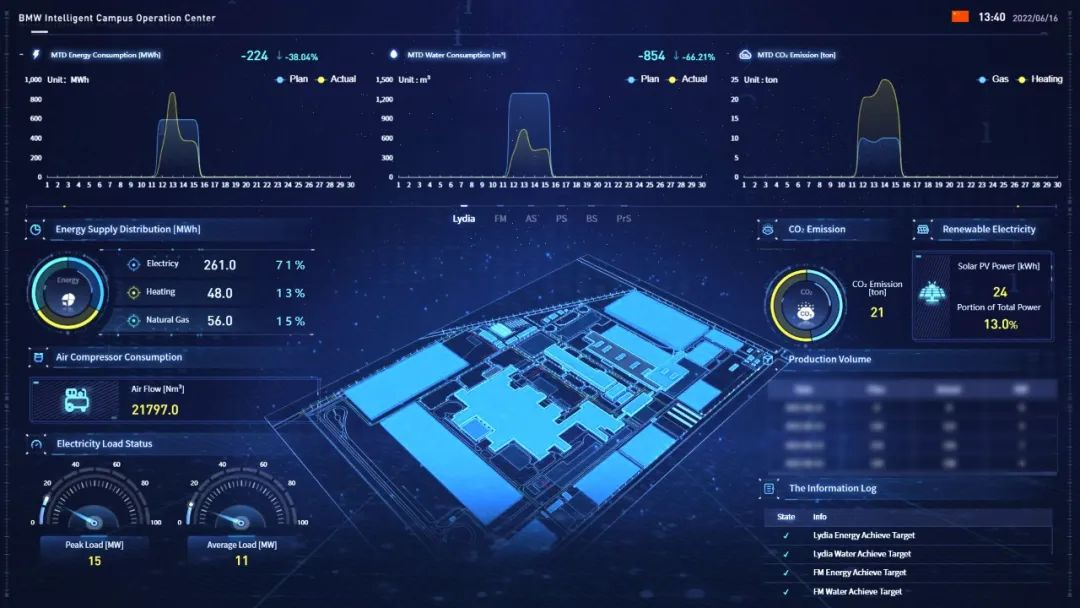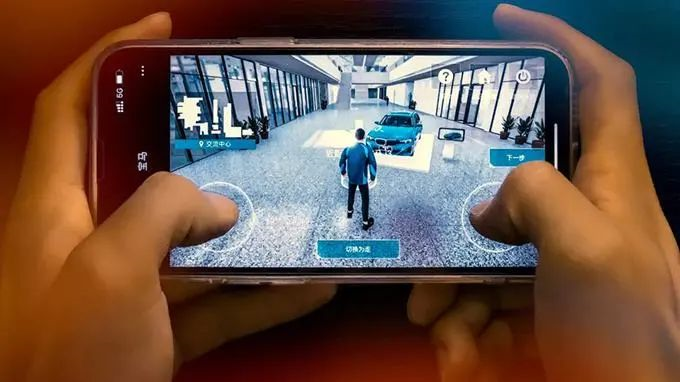Author: Michelin
What’s the relationship between automobiles and the Metaverse?
Since the Metaverse concept became popular, car companies have been using it as a gimmick. Within half a month, I have already attended two Metaverse-themed release events, where real-world automobiles are connected with virtual reality through virtual scenarios, virtual keynote speakers, and virtual technology explanations.
However, compared to a simple Metaverse release event, BMW has gone all out this time by making a “mobile game” worth 15 billion yuan. What kind of game is worth so much money?
In this “mobile game,” BMW has faithfully restored the production scene of its latest iFACTORY – the Lida factory. Or rather, it should be said that the Lida factory has a one-to-one reconstruction of the design of the virtual world.
At the Lida factory, which just opened on June 23rd, BMW Brilliance’s production capacity will be expanded to 830,000 vehicles per year, with an investment of 15 billion RMB. This marks the largest investment made by BMW in a single project in China to date. This means that for every three BMWs sold globally, one is produced at the Shenyang factory.
After watching the entire event, my biggest takeaway is that when we are questioning the relationship between automobiles and the Metaverse, virtual reality has already penetrated into automobile production and manufacturing. The Lida factory is a factory that grows out of the Metaverse.
How does the “Industrial Metaverse” come into reality?
As automobile digitization gradually deepens, digitization is not limited to large screens and 5G networks within the vehicle, or watching videos and playing games inside the car, but is integrated into the design, production, and manufacturing of automobiles.
We often hear the term “digital twin”, which is closely related to automobile digitization. It involves using the digital twin to simulate, verify, and optimize the design, function, and intelligent driving technology of a vehicle before applying it to the physical car. This is almost a prerequisite for intelligent automobile design today. However, applying the digital twin to the construction of automobile factories is obviously a larger and more complex scenario.
Why is the Lida factory called a “factory growing out of the Metaverse”?Starting from the planning and design phase of Lida factory, all planning and simulation were conducted in a completely virtual environment, from factory layout, building design, production line layout to equipment debugging. All of them were created and simulated in the powerful Epic Games Unreal Engine 3D creation platform to build a real “industrial metaverse” factory.
With the construction and simulation of the digital twin model, before the factory is built, employees can fully familiarize and experience the factory on the digital platform, discovering problems and areas for improvement in the design and system operation. This avoids the waiting for the completion of the factory, step-by-step debugging and optimization, and rework and delay caused by experience evaluation, improving the efficiency of the factory construction and reducing the cost of repeated adjustment and optimization.
It is precisely with the support of the digital twin model that, in the face of many unfavorable conditions under the epidemic, the construction period of Lida factory was still shortened by 6 months, bringing the industrial metaverse in the virtual world to reality.
The Lean and Agile Digitalization Brings
Every era has different demands on production and manufacturing. A hundred years ago, when cars moved from small-scale handmade manufacturing to mass production, the automobile assembly line was born. A few decades ago, when cars entered the era of diversity, requiring small-batch production of multiple varieties, lean production became the new benchmark for automobile production. So, what is the new production standard when cars enter the era of intelligence and electrification?
It is a highly integrated, electrified production line, a production process that can be seamlessly connected like a game, high-quality, low-error products, and green, sustainable production methods.
“10 hours to produce one Model Y.” This evaluation of the Tesla Berlin factory once made Herbert Diess, CEO of Volkswagen, envious, and even upgraded and transformed his own factory to improve production efficiency. Using digital means to enhance production efficiency is the first requirement of the new era for automobile production. This kind of efficiency comes from the optimization of production processes and transportation management during factory planning.At the Regensburg plant, BMW is the first to apply the yard management system, which combines real-time logistics data with 3D models. This allows workers to simulate various logistics scenarios in a virtual platform in advance and present real-time changes on site intuitively. Based on the simulation platform and heat maps analysis, workers can provide precise and efficient parts for production with intelligent automated guided vehicles (AGVs).
For example, nearly 80% of the vehicles produced by the Shenyang plant are transported to various places by train. By connecting the loading simulation system with the automatic train scheduling system, the vehicles can be delivered to various places most efficiently according to the progress of whole-vehicle production and train scheduling time.
Previously, Musk described the seamless and efficient nature of the new factory by saying “Raw materials in, cars out” when describing Tesla’s Texas factory. It seems that BMW is ready to use digitalization to achieve seamless management mode of “raw materials in, whole cars delivered to various places.”
In addition to improving efficiency, digitalization also tightly “tracks” every stage of the production process to improve product quality. For example, in the painting workshop at the Regensburg plant, an AI computer vision system is responsible for taking photos and analyzing the paint surface of each car, and it can take 100,000 photos in 100 seconds. With machine learning, the system can increasingly recognize tiny flaws on the painted surface, ensuring perfect parts and painted bodies. Similar intelligent systems have about 100 applications at BMW’s Shenyang production base, driving the efficiency and quality improvement of vehicle production with data.
Of course, to achieve this “data-driven” effect, strong “infrastructural capabilities” are also essential, such as network environment and data processing capabilities. For this reason, the Regensburg plant is equipped with over 1,600 multi-functional cameras, producing more than 10 petabytes of data per year. To meet the demand, 40 data centers, each as large as a badminton court, have been newly built for data processing.In order to improve efficiency and adjust the functional attributes of the production line using digitization, the Lida Factory has developed “flexible production technology.” When the factory changes production models, the production line does not need to make heavy and time-consuming adjustments. Instead, the production line can automatically change the production capacity of each link according to the requirements of different models and adjust the corresponding resources. As a factory designed to produce electric vehicles, the Lida Factory can also adjust to produce new and derivative models in a short period of time.
It can be said that digitization guarantees the high efficiency and flexibility between factories.
How to create the “greenest” electric car?
Is your electric car environmentally friendly enough? When carbon neutrality becomes a clear goal that car companies cannot ignore, replacing internal combustion engines with power batteries and using electricity instead of gasoline and diesel is no longer the only standard for measuring whether a car is environmentally friendly.
In March 2021, the BMW Group for the first time merged its sustainability report and corporate financial report, made the progress of carbon reduction public and transparent, and also planned to reduce the carbon emissions of a single car’s life cycle by 40% compared to 2019 by 2030. This means that not only does one need to replace fuel-powered cars with electric cars, but also needs to reduce 80% of carbon emissions in the production process of electric cars. Therefore, it has become a natural goal to produce cars in the most sustainable way in new factories.

Currently, at the BMW Shenyang production base, we can see 290,000 square meters of solar panels, which can support the electricity consumption of 9,000 ordinary families for one year. With the use of photovoltaic energy generated by these solar panels and other renewable energy, the BMW Shenyang production base has been able to achieve 100% use of renewable energy. At the same time, the Lida Factory has carried out transformation of the production line. Through innovative intelligent energy management system (IOC), the energy and resource consumption of factory-level, facility-level, process-level and equipment-level are monitored in real time. After deep analysis of artificial intelligence, energy consumption is further optimized.
From the sustainable fabric interior of the previous BMW iX, the rare earth-free motor, to the recycling and reuse of scrap aluminum in the factory, and to the reduction of energy consumption and 100% use of renewable energy in the production process, BMW’s iFactory is trying to create the “greenest” electric car from every step of low-carbon emission reduction.
Finally
“The future of car production requires a new, holistic way of thinking.” Dr. Milan Nedeljkovic, responsible for production at the BMW Group, describes the newly opened Lida Factory in this way.When a virtual reality product launch and a metaverse mobile game debut, what lies beneath the entertainment surface is not just a gimmick of the metaverse, but a way to integrate digitization into the production and manufacturing process of automobiles. Perhaps, this is the new thinking of BMW on the future of car production.
This article is a translation by ChatGPT of a Chinese report from 42HOW. If you have any questions about it, please email bd@42how.com.
